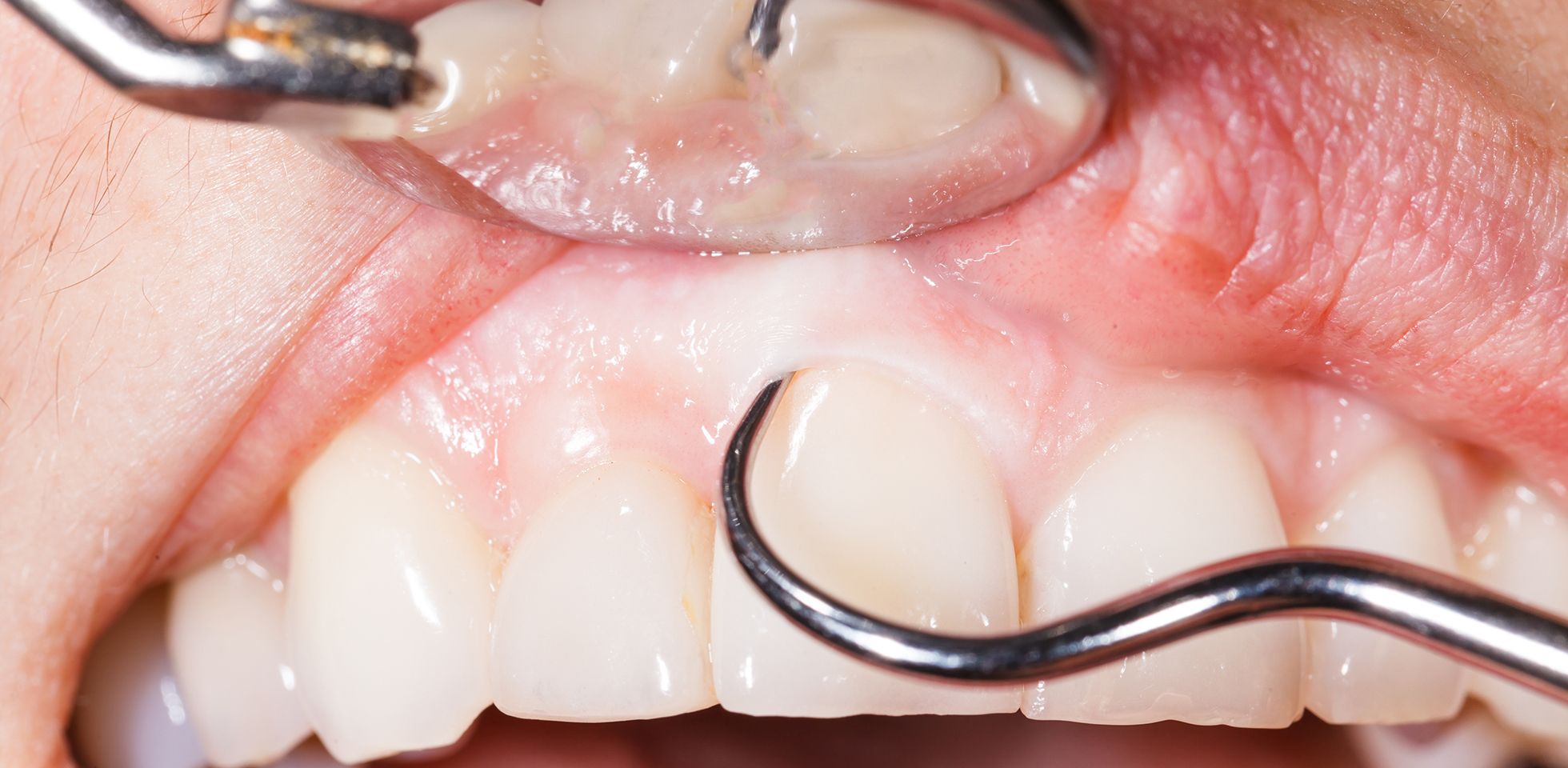
What Is Abfraction?
Abfraction is the loss of tooth structure where the tooth and gum come together. The damage is a wedged-shaped or V-shaped groove that occurs on the tooth. If the gum loss is mild we see the abfraction where the crown of the tooth meets the neck of the root. If the gum loss is more severe the abfraction can appear on the root itself.
The abfraction is not caused by bacteria or sugar, like cavities. It is a biomechanical problem that develops when we grind our teeth. The grinding places horizontal forces on the tooth (mostly at the neck where the gum is). These forces cause the tooth to microscopically flex. The flexion causes a breakdown of the integrity of the enamel, dentin and cementum. The groove that develops is pathological and is called an abfraction. This groove can be sensitive to sweets, cold, and heat. Due to loss of enamel, the softer dentin is exposed and this layer is more prone to cavities. The grooves can be unsightly because the dentin underneath is usually a darker more brownish shade than the tooth. Additionally when one eats, with abfractions food tends to get trapped in the grooves. It is embarrassing to be at a lunch meeting with green salad unknowingly stuck on our teeth.
What Are the Reasons for Abfraction to Occur?
Our beautiful teeth are connected to human beings. The fact that we are human means that we develop bad habits, get infections, and will age. C’est la Vie! One of the most common annoyances of life is receding gums. This is a very common malady that affects a lot of people.
Our gums recede for different reasons including:
- Periodontal disease
- Orthodontic treatments (usually too rapid movement)
- Systemic disease (e.g. diabetes)
- Aggressive tooth brushing with a hard brush
- Abrasive kinds of toothpaste (usually the whitening ones, or the ones with baking soda)
- Not replacing missing teeth in the arch so that the surrounding teeth shift
- Poor home care (brushing and flossing properly)
- Not seeing the dentist 2x yearly for check-ups
- Grinding our teeth (bruxism)
Abfraction Prevention Tips
- Regular dental checkups
- Proper home care
- Night Guards
- Invisalign treatment with our nationally renowned specialist, Dr. Benjamin Ahn
Abfraction Treatment In New York City
Once the abfractions appear, they can be treated in the following ways:
- Resin fillings: For small to moderate problems, tooth-colored material is placed in the defect, under a small bright light the resin is bonded to the tooth. The defect is gone, it is cosmetic, noninvasive, and inexpensive.
- Gingival graft: If the abfraction is occurring with significant loss of gum tissue, a periodontal graft may be diagnosed. This is done under the expert care of our periodontist Dr. Jin Wan
- Nightguard fabrication
- Invisalign treatment
We at 172 NYC Dental are trained to prevent abfractions from occurring. An ounce of prevention is worth a pound of cure. If they exist we can treat them conservatively, expertly.
We look forward to seeing you at our beautiful, safe, ultra-modern office. Call us at 646-921-5541 and make an appointment today.








